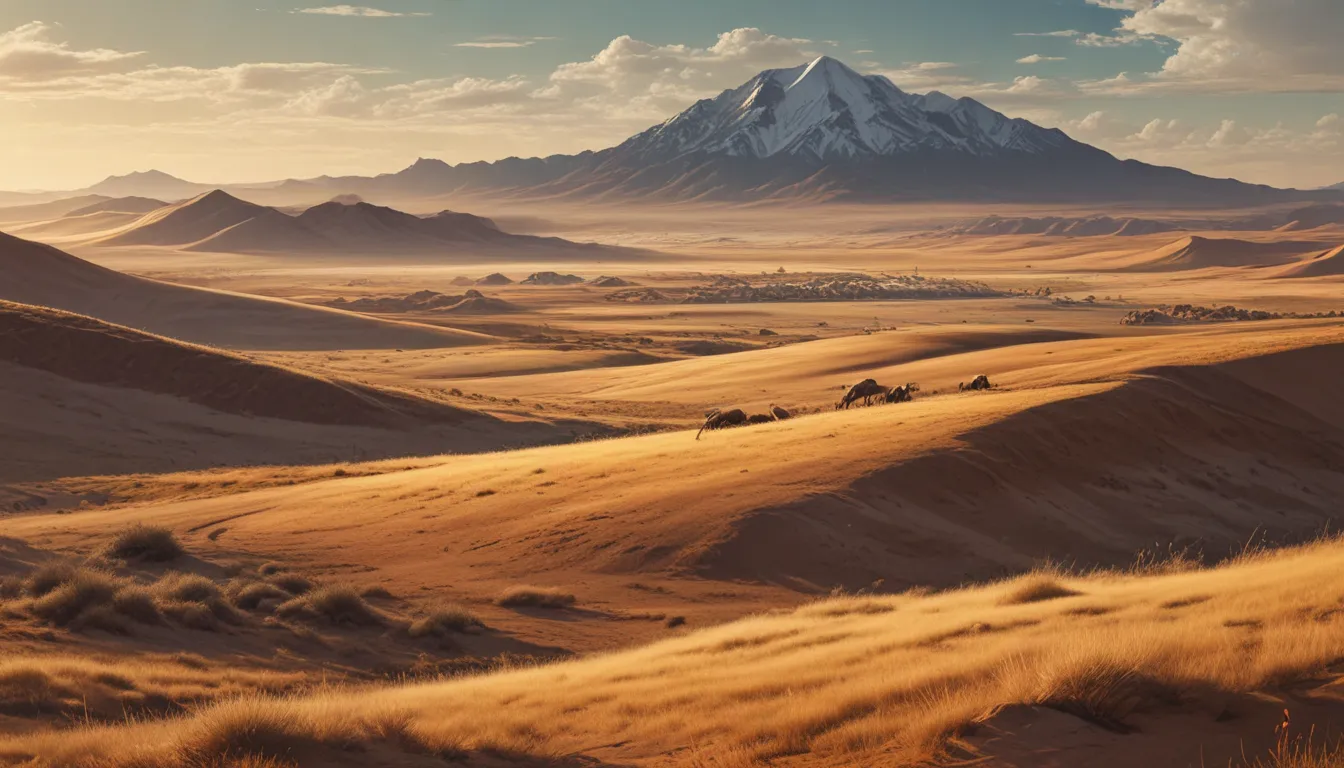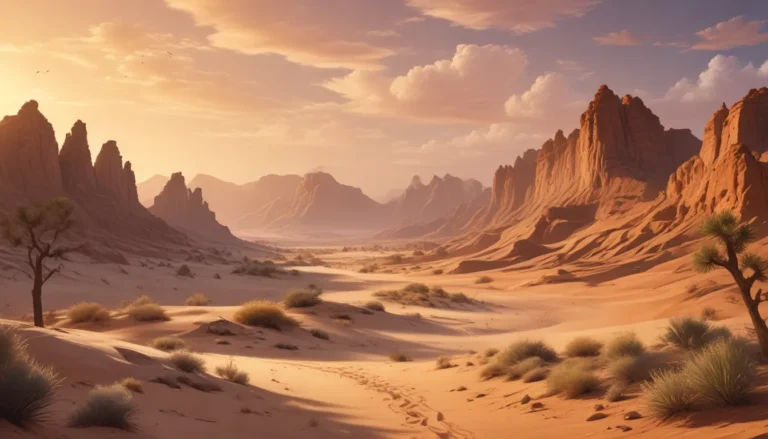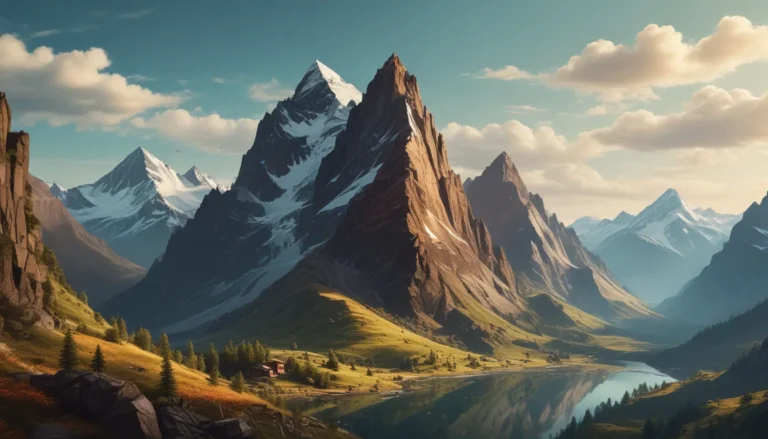A Note About Images: The images used in our articles are for illustration purposes only and may not exactly match the content. They are meant to engage readers, but the text should be relied upon for accurate information.
The vast steppe regions that span across continents are not just expansive landscapes but also hold a wealth of natural wonders and cultural heritage. From the Eurasian steppes to the grasslands of Africa and America, these regions have captivated people for centuries. In this article, we will delve into 20 fascinating facts about steppe regions, shedding light on their unique features, wildlife, historical significance, and more. Let’s embark on a journey to explore these remarkable steppe regions and uncover the secrets they hold.
Unveiling the Mysteries of Steppe Regions
The Origin of the Name “Steppe”
The term “steppe” originates from the Russian word “step’,” which translates to “plain” or “field.” This fittingly describes the vast, open expanses that characterize these unique regions.
The Extent of Steppe Regions
Steppe regions cover a significant portion of the Earth’s land surface, occupying about 20% of the total land area. These expansive landscapes stretch far and wide, showcasing the beauty of grasslands.
Distinct Climate of Steppe Regions
Characterized by low rainfall and hot summers, steppe regions experience long periods of dry weather with scorching temperatures during the summer months. This unique climate pattern shapes the ecosystems that thrive in these areas.
The Majesty of the Eurasian Steppe
The Eurasian Steppe stands as the largest steppe region in the world, spanning from Eastern Europe to Siberia and covering an impressive area of around 6,000,000 square kilometers. Its vastness and beauty are truly awe-inspiring.
Diverse Ecosystems in Steppe Regions
While predominantly covered in grass, steppe regions host a variety of ecosystems beyond just grasslands. From forests to wetlands and even deserts, these regions showcase a rich tapestry of biodiversity.
Nomadic Traditions in Steppe Regions
For centuries, nomadic tribes have called steppe regions home due to their vast expanses and favorable conditions for herding. Ancient tribes like the Mongols and Huns have thrived in these lands, leaving behind rich cultural legacies.
Iconic Wildlife of Steppe Regions
Steppe regions are known for their rich biodiversity, supporting a wide range of plant and animal species. Iconic animals like the Przewalski’s horse and the saiga antelope find a habitat in these regions, adding to their natural charm.
Historical Significance of Steppe Regions
With ancient civilizations and unique archaeological discoveries, steppe regions hold a wealth of historical significance. From the Great Plains in North America to the Silk Road in Central Asia, these regions have been pivotal in shaping human history.
Embracing the Beauty and Value of Steppe Regions
Role in Carbon Sequestration
The vast grasslands of steppe regions play a crucial role in carbon sequestration, aiding in the mitigation of climate change by storing carbon dioxide in the soil. This environmental function highlights the importance of preserving these landscapes.
Cultural and Trade Routes
Steppe regions have been fundamental trade routes throughout history, connecting civilizations and fostering cultural exchange. The steppes of Central Asia, in particular, played a significant role in the economic and cultural development of the region through the Silk Road.
Agriculture and Unique Plant Species
The fertile soils and favorable climate of steppe regions support various agricultural activities, including the cultivation of wheat, barley, and corn. Additionally, these regions are home to unique plant species that have adapted to the harsh conditions, showcasing nature’s resilience.
Wildlife and Migratory Birds
Steppe regions serve as important habitats for migratory birds, providing crucial rest stops and breeding grounds for numerous species during their long journeys. The open grasslands offer a sanctuary for these birds amidst their global travels.
Environmental Challenges and Conservation Efforts
Despite their natural beauty, steppe regions face environmental challenges such as desertification due to human activities and climate change. Conservation efforts are vital in protecting these delicate ecosystems and safeguarding the biodiversity they harbor for future generations.
Appreciating the Wonders of Steppe Regions
Steppe regions have inspired countless literary and artistic works, serving as a muse for creativity across various mediums. From classic literature to beautiful paintings, these landscapes have captivated minds and hearts with their vastness and beauty.
Preserving the Legacy of Steppe Regions
The conservation of steppe regions is essential for maintaining biodiversity and climate stability. By safeguarding these landscapes and their inhabitants, we can ensure a sustainable future for both nature and humanity.
In conclusion, steppe regions offer a world of wonders waiting to be explored. From the rich cultural heritage of ancient civilizations to the diverse plant and animal species that call these lands home, there is much to discover and appreciate about these remarkable regions. By understanding their importance in terms of biodiversity conservation and environmental stability, we can truly appreciate the interconnectedness of our planet. So, next time you encounter a mention of steppe regions, remember the fascinating facts and the beauty that lies within these captivating landscapes. Let’s continue to explore and cherish the natural treasures of steppe regions for generations to come.
FAQs: Exploring Steppe Regions
- What defines a steppe region?
-
A steppe region is characterized by vast expanses of grassland with minimal tree cover. It typically features a semi-arid or arid climate and can be found in various parts of the world.
-
Where are steppe regions located?
-
Steppe regions can be found in Eurasia, North America, Central Asia, and even parts of Africa. Each region has unique characteristics and supports diverse ecosystems.
-
Are steppe regions important for wildlife conservation?
-
Yes, steppe regions are crucial for supporting a wide range of plant and animal species, including migratory birds and iconic wildlife. Preserving these regions is essential for biodiversity conservation.
-
How can we protect and conserve steppe regions?
-
Conservation efforts include implementing sustainable land management practices, establishing protected areas, and raising awareness about the value of steppe regions. Together, we can ensure the preservation of these vital landscapes.
-
What role do steppe regions play in climate change mitigation?
-
Steppe regions help mitigate climate change by storing carbon dioxide in their grasslands. By preserving these ecosystems, we can contribute to efforts aimed at addressing climate change on a global scale.
-
Why are steppe regions culturally significant?
- Steppe regions have a rich cultural heritage, with ancient civilizations like the Scythians and Xiongnu leaving behind a legacy that contributes to the historical significance of these regions. The Silk Road, which passed through Central Asian steppes, also played a pivotal role in cultural exchange.
Our Commitment to Quality and Authenticity
At the heart of our content is a dedication to delivering trustworthy and engaging information to our readers. Every fact shared on our platform is contributed by users like you, ensuring a diverse range of insights and knowledge. Our team of editors rigorously reviews each submission to uphold the highest standards of accuracy and reliability. Trust in our commitment to quality as you journey through the fascinating world of steppe regions.






